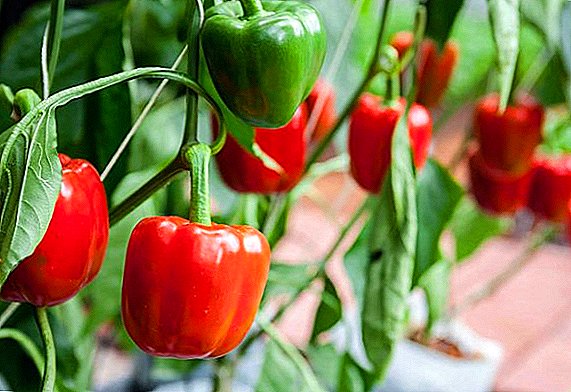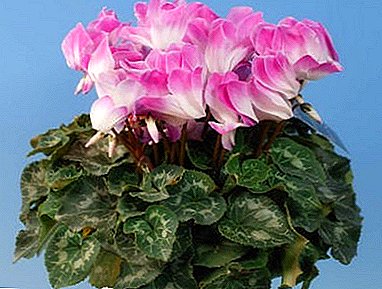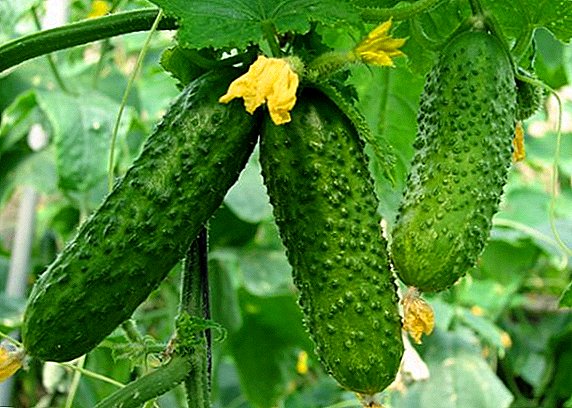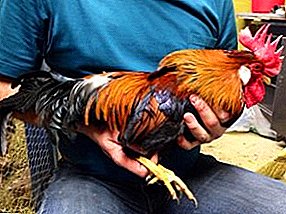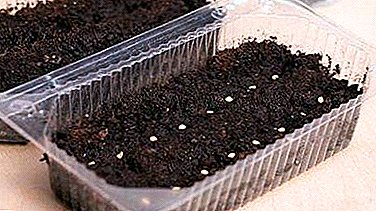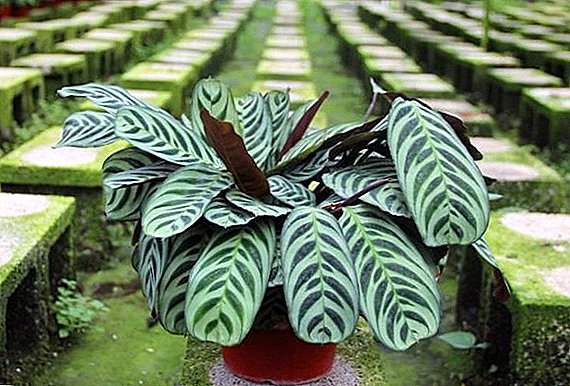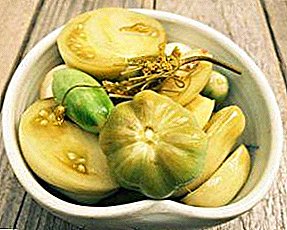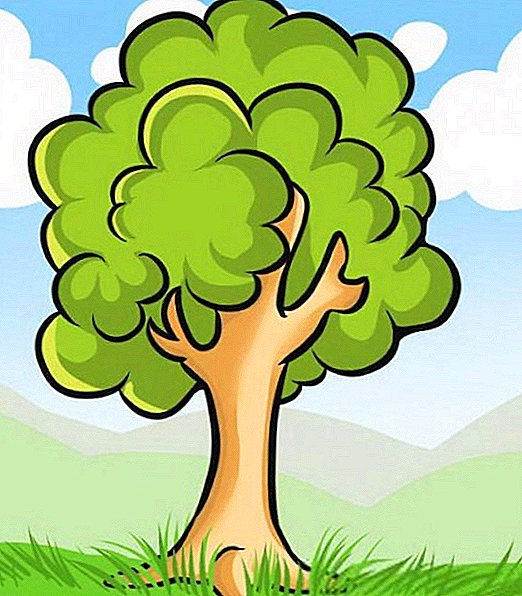 We are surrounded by a huge number of trees and shrubs. Sometimes we do not even think about how many species of these plants exist. Our article will describe the most popular representatives of deciduous trees and their varieties.
We are surrounded by a huge number of trees and shrubs. Sometimes we do not even think about how many species of these plants exist. Our article will describe the most popular representatives of deciduous trees and their varieties.
Acacia
Acacia belongs to the Robinia genus to the legume family. In the world there are more than 600 species of this plant. On average, the height of the tree reaches 25 meters, but sometimes there are also shrub-like representatives.
Important! In all parts of acacia contains a toxic substance - alkaloid robinin, therefore, it is not recommended to use it for therapeutic purposes on its own.
The homeland of acacia is North America, but today the tree grows in countries such as New Zealand, in African states, in Europe.  Foliage has an ovoid shape. The upper part of the plate is green, has a smooth structure, and the bottom resembles a velvet, gray-green color.
Foliage has an ovoid shape. The upper part of the plate is green, has a smooth structure, and the bottom resembles a velvet, gray-green color.
Flowers plants are predominantly white or yellow, smell good.
Consider the most common varieties:
- Street Acacia. The variety is immune to pollution, fast-growing. The height of the tree is 15-25 m, width - 8-10 m. It has alternating, non-parisous leaves, the length of which can reach 15 cm, painted in dark green color. The flowers have a white color, pleasant aroma, length - about 20 cm. The variety blooms in late May - early June. Street acacia is not too demanding on the soil, but if it is planted in damp, heavy soil, it may suffer from frost. Prefers sunlight, tolerates drought.

- Golden Acacia. The height of trees of this variety is on average 9-12 m. They have an average size, openwork foliage. The flowers are painted white, gathered in brushes, the size of which is about 20 cm. The variety blooms in late spring - early summer. The fruit is brown, rather flat, 5-12 cm in length. The foliage is obovoid, blooming late. In spring and summer there is a light blue-green color, and in the fall - light yellow. The variety grows very well under the sun, tolerates drought.
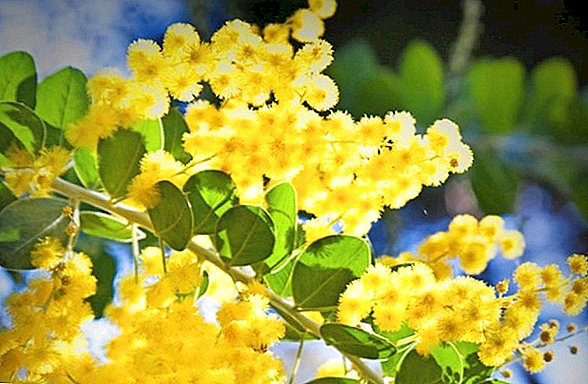
- Silk acacia. Plant height - 6-9 m, width - 6-7 m. It has an umbrella-like spreading crown, dark green bark. Dissolving leaves occurs rather late - in May. Foliage begins to fall off late - in November. It is openwork, length - 20-40 cm. The flowers are painted in yellow-white color, bloom occurs in July and August. Grows well in neutral soil and in lighted areas.
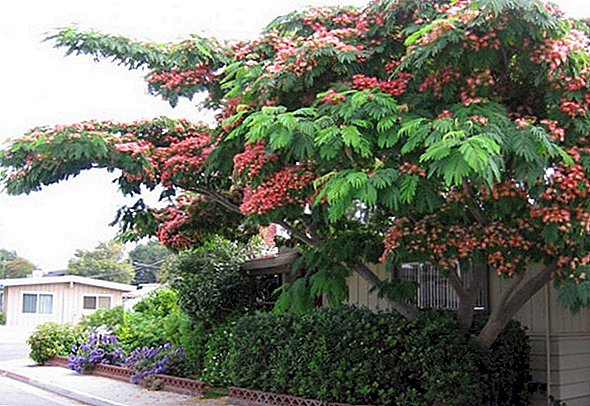
Read also about how to grow acacia from seeds, what are the varieties of acacia, as well as the peculiarities of growing white, silver and yellow acacia. Also from the acacia is obtained very useful honey.
Birch tree
In the family there are about 120 species. Birch has a smooth bark, which thinly exfoliates, possesses alternate, pedunculate leaves. Flowers are represented by staminate middles, and the fruit is oblate single seed seedlings, in which there are two membranous wings.
The most common varieties include the following:
- Dwarf birch. The place of growth is Western Europe. It is found in the tundra, alpine belt, moss forest swamps, wet and poor sour peatlands. It is a shrub whose height does not exceed 120 cm. The diameter is always approximately the same as the height. It has a crown form and superficial root system. Growth is slow. Prefers an acidic and slightly acidic soil. Disembarking is recommended in the fall. The foliage is round, the width can be greater than the length (length - 5-15 mm, width - 10-20 mm). The leaves are green. The inflorescences are represented by medium bars, the length of which is 5-8 mm, and the fruits - by elliptical nuts. There is a good frost resistance.
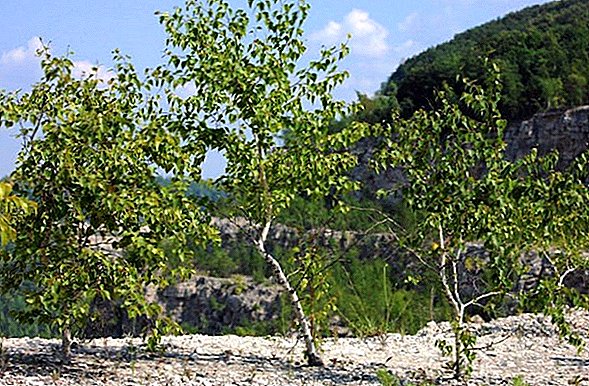
- Marsh Birch. The tree is of medium size - the height is not more than 20 m. The branches rush strictly upwards. Young trees have white bark, which with age becomes gray-black color. The foliage has an elliptical shape, the length is 3-5 cm. It prefers wet and dry poor sandy soils. Flowers are represented by yellow-green earrings.
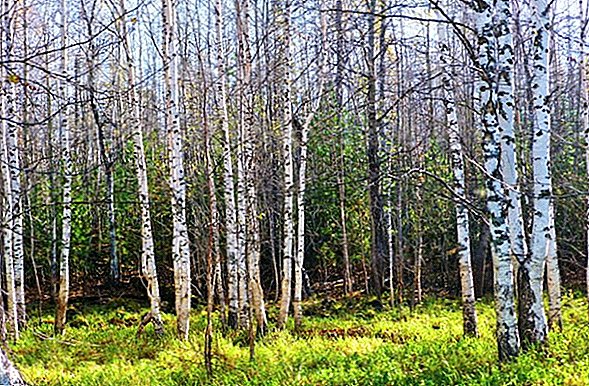
- Birch weeping. The tree is notable for its graceful appearance, dense branching. It has an umbrella-shaped crown and branches hanging down, in most cases they reach the ground. Height is about 8 m, width 4-7 m. Looks great in small gardens. It has round leaves with a diameter of about 2 cm, painted in dark green. In the fall, they acquire an orange-red and fiery color. The tree is undemanding to the soil, loves the light, has good winter hardiness.
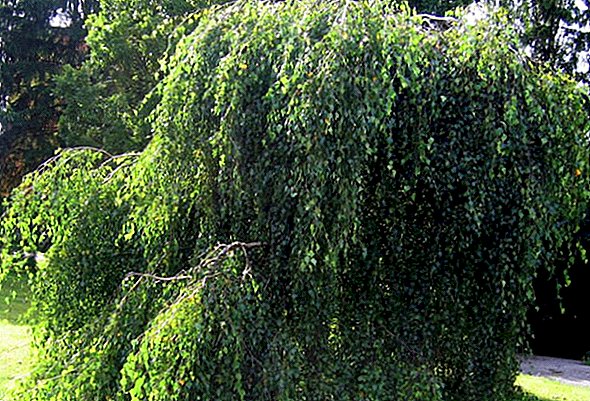
Did you know? For the manufacture of one of the Faberge eggs in 1917, Karelian birch was used. The egg got the name - "Birch".
Elm
Elm is a tall deciduous tree with ovate leaves twisted at the base. Plant height may be different and depends on the height of the grafting. The crown is usually very wide, can reach 10 meters with a tree height of 5 meters.
She has a weeping form. The inflorescences have a nondescript appearance, rather small, but the fruits are represented by large greenish krylatok. Foliage marsh color. It grows well in moist fertile soils, has good frost resistance, often found in urban parks.
Consider the most common types of elm:
- Elm thick. It grows wild in Central Asia. The plant differs in rather big height - can reach 30 meters. It has a low, broad-pyramidal crown. Possesses dark bark, leathery leaves, the length of which is about 2 cm. Resistant to drought, grows rapidly in the soil with high moisture.

- Elm grabber. It has high winter hardiness, if it grows in forest-steppe and steppe zones. The height is up to 20 m, it has a sprawling crown, the diameter of which can reach 10 m, thin brown shoots. Differs in dense, marsh color, shiny, unequal leaves, 12 cm long and 7 cm wide. With the arrival of autumn they acquire a bright yellow color. Inflorescences are small, red-red. Moisturized, deep and nutritious soils are well suited for cultivation.

- Elm Androsova. The height of the tree is about 20 m, it has a dense spherical crown. Old branches have gray bark, and young - brown-ash. The foliage is different ovoid or rounded-ovate, with a pointed apex. The length of the leaf is 5-6 cm. The fruits are angularly rounded dowels, up to 2.5 cm long. It has excellent winter hardiness, grows well in nutrient soils with moderate moisture. Growth occurs quickly, tolerates drought. Often used in refining parks and gardens.
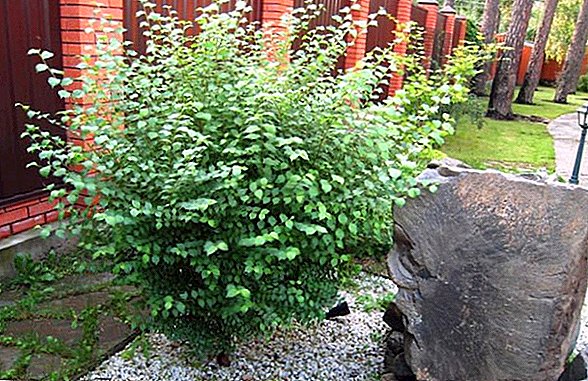
You will be interested to learn about how to plant and grow elm, also find out what types of elm there are, in particular, you can read more about growing smooth and rough elm. Find out how bark and elm leaves are used in traditional medicine recipes.
Hornbeam
The tree grows on the mainland of Europe, in Asia Minor, the Caucasus, and Transcaucasia. The habitat covers broad-leaved forests. Plant height can reach 12 m, trunk diameter - up to 40 cm. On average, a tree can live 150 years. It has a dense crown having a cylindrical shape.
The trunk is ribbed, the branches are rather long, thin. The tree has a superficial root system, lateral anchor roots that go deep into the ground and grow slowly.
The leaves are oval, length is about 15 cm, and width - 5 cm. The upper part is painted in dark green color, the lower part - in pale green. With the arrival of autumn, the foliage acquires a lemon-yellow color.
Consider the most common types of hornbeam:
- Pyramidal hornbeam. There is a narrow, cone-shaped uniform habit and a long apical shoot. Plant height can reach 15-20 m, crown width - 4-8 m. It has alternating leaves with ovate or oblong-elliptical shape. The length of the leaf is 5-10 cm, width - 3-6 cm. They have a light green color, in autumn they acquire a bright yellow shade.
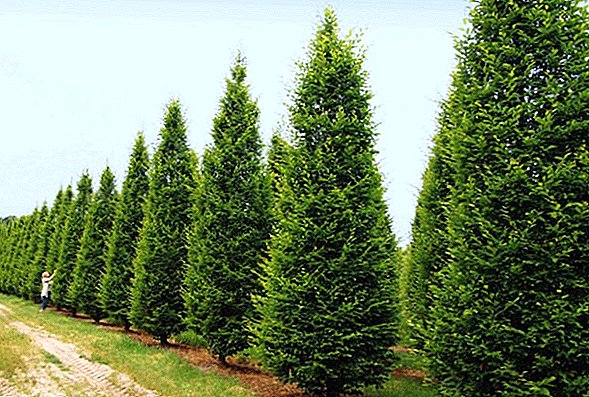
- Eastern Hornbeam. Found in the Crimea, the Caucasus, the Balkans, Asia Minor, Iran, on the dry slopes of the mountains and the undergrowth of coniferous forests. The height of the tree is about 5 meters, in rare cases it can reach 8 meters. Possible bushy form. Vegetation period falls on the second half of April and lasts until mid-October. Flowering does not occur. It has a low winter hardiness.

- Cardiopulmonary Hornbeam. The natural place of growth are shady, mixed forests of the south of Primorsky Krai, China, Japan, and Korea. The tree’s height is on average 15 m. The plant has ovate leaves, which are 12 cm in length. In spring and summer, they are painted in a light green color, and with the advent of autumn they become red or pale-rusty. The length of men's earrings is up to 8 cm. The tree is unpretentious to the ground, it has surface, strongly branched roots. Under favorable conditions, can live to 200 years. It has good wind resistance.

Oak
In the genus, there are about 600 species that grow in the temperate and tropical zones of the Northern Hemisphere.
The tree has a powerful tent-shaped crown, leathery leaves, deep roots. He loves light, grows well on rich soils, has good wind resistance, drought resistance, long-lived.
The most common types include:
- Pedunculate oak. The place of growth is the European part of Russia and Western Europe. Occurs in coniferous and deciduous forests on rich grounds. The tree has a large size: height - up to 50 m, width - up to 25 m. The fruits are represented by acorns, up to 3.5 cm, ripening in the autumn. Foliage next, leathery, elongated, obovate. The leaf is up to 15 cm long, it has an elongated vertex and several pairs of side vanes of different lengths. The surface of the foliage is shiny, painted in marsh color, in the lower part it is light green. It has good winter hardiness, often found in urban parks.
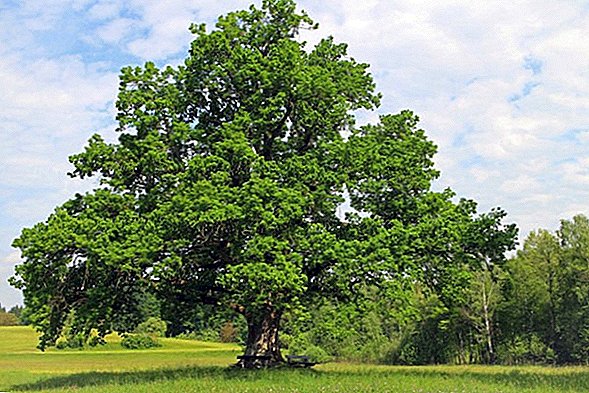
- Red Oak. Growth areas - forests, shores of lakes and rivers, areas where water does not stagnate. Occurs in deciduous and mixed forests on low hills. The height of the tree reaches 25 m, there is a dense tent-shaped crown. Possesses deep, thin, shiny leaves, painted in reddish color during blooming. In the summer, have a dark green color. The length of the leaf is 15-20 cm. Acorns have a tent-like shape, a length of up to 2 cm, a red-brown color. The species has good frost resistance, wind resistance.

- Fluffy oak. The place of growth is the southern part of the Crimea, the northern part of the Caucasus, Southern Europe, Asia Minor. Plant height is 8-10 meters. There is a low winding trunk, bulk crown. The length of the sheet is 5-10 cm, the shape is very diverse and variable, the upper part is painted marsh color, the lower part is gray-green. Growth is slow, loves light and heat, prefers dry stony slopes and soil with lime.
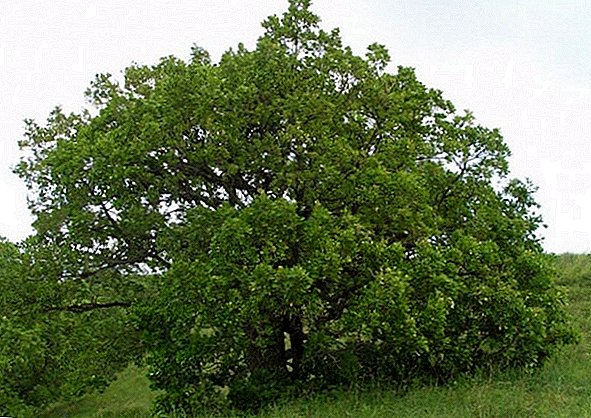
Important! It is not recommended to grow red oak in large quantities - it has too hard leaves that decompose for a long time, forming a “film” on the ground that will prevent other plants from growing.
Willow
Willow grows in Siberia, North China, in the north of Europe, north of America. The height of the tree is about 15 m, but sometimes there may be species up to 35 m in height. Willows prefer wet places, so most often grow on the banks of rivers and lakes.
The most common types of willow include:
- Willow. Plant height is 5-6 m, in rare cases - up to 8 m. It has straight, long, thin, tight branches. The length of adult leaves is 15-20 cm, width - up to 4 cm. They have an elongated shape, covered with silky bristles at the bottom, slightly shine. The fruits are represented by silky, swollen boxes, whose length is 4-5 mm. It blooms in spring, starting in March. Fruiting begins in April and ends in June.
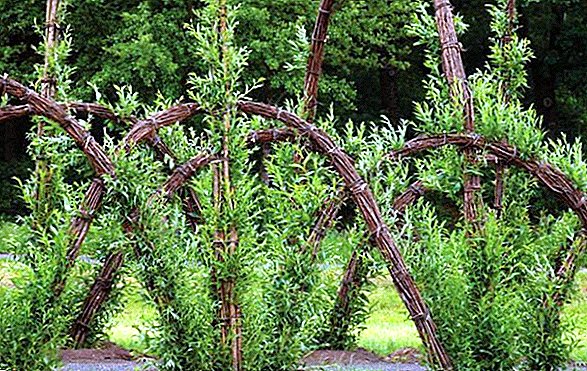
- Willow silver. It grows throughout Europe, in North Asia. Can be found in wet areas, as well as sand dunes. It looks like a shrub whose height does not exceed 50 cm, and its width is 1 m. Growth occurs slowly. It has thin, gray-green shoots, on the surface of which are silky hairs. The foliage is small, oval or elliptical in shape, after blooming it acquires a white-silver color. With the arrival of autumn leaves become pale yellow.
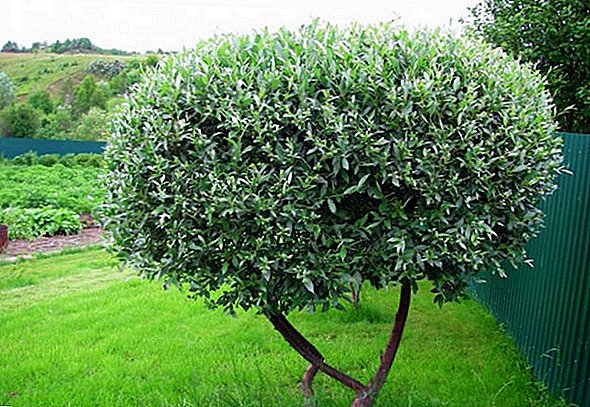
- Purple willow weeping. The place of growth is Eastern and Western Europe. The shrub has a conical crown shape. Its height is 5-7 m, width 3-5 m. The foliage has a narrow-lanceolate form, the upper part shines a little, has a bluish-green color. Length is approximately 8 cm. Flowering occurs in March - April. The length of the earrings is up to 3 cm, they are painted in silver-green color. On male earrings are purple anthers. It has good frost resistance, prefers light areas, easily adapts to urban conditions.

Read also about these types of willow, such as: weeping, spherical, goat, dwarf, purple, white and "Hakuro Nishiki."
Maple
The height of the tree is different and depends on its type. On average it can reach 30 meters. Maple is a long-lived - lives about 200 years. The bark is colored gray, and the diameter of the trunk can reach 1.5 m. It has large, wiry leaves having 5 lobes and pointed lobes.
In autumn, the foliage becomes amber color. After leaf fall, seeds begin to fall off, resembling the appearance of dragonflies. Flowering occurs in May and lasts about 10 days.
Consider the most common types of maple:
- Field maple. The tree can reach a height of 3 to 15 meters, width - from 8 to 12 meters. It has a wide conical or egg-shaped crown, with an average growth rate (25-40 cm annually). Distinguished by the presence of five-lobed dark green leaves, which in autumn become bright yellow or orange color. Maple has a deep, dense, slow-growing root system, grows well in urban environments, wind-resistant.
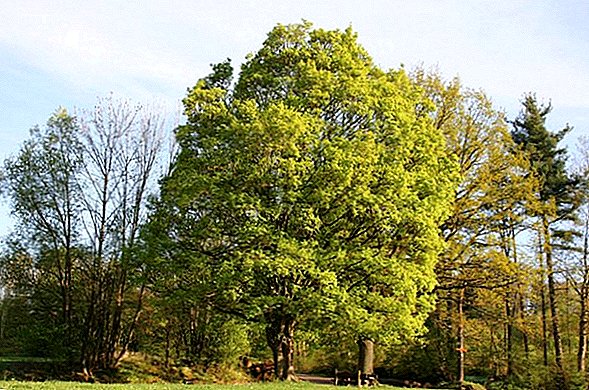
- Spherical maple. The height of the tree reaches 5 m, width - 3-5 m. It has a spherical crown, which expands gradually. It has yellow-green flowers. The fruits have a not very attractive appearance. It has five-lobed leaves, which bloom in early April. At the beginning they have an orange-red color, in the summer they get golden-yellow, and the lower part is painted in a light green color. Poor, sandy and acidic soil is not suitable for cultivation. It grows well in urban environments, has a high wind resistance.
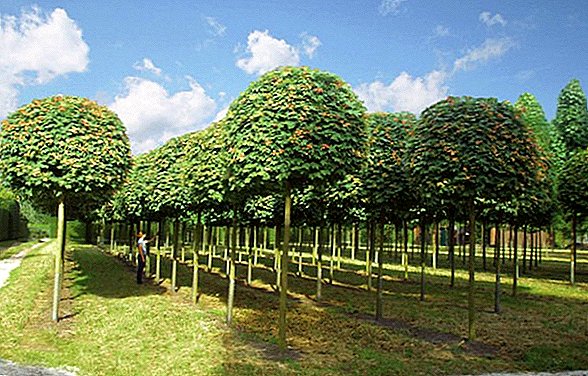
We advise you to find out what nuances of cultivation of Ginnal maple, Flamingo, as well as Norway, red, silver, Tatar, Japanese, silichion and Manchurian maples.
Linden
It belongs to the Malvova family. The place of growth is the temperate and subtropical zone of the northern hemisphere. Includes about 45 species. It has alternate leaves, which are located in 2 rows.
Consider the most common types:
- Winter linden. Often found in Europe. The height of the tree reaches 25-30 m, width - 12-15 m. It has a uniform, wide, cone-shaped, dense crown. It has small yellow-white flowers, bloom occurs in July. It has a strong root system, grows well in the shade, has a high winter hardiness. It grows well in neutral soil, does not like high temperatures and drought.
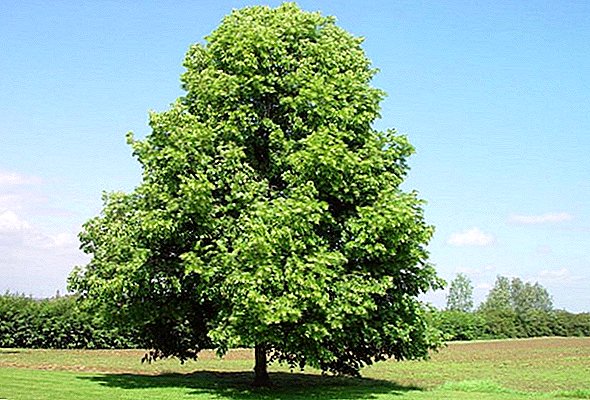
- Crimean linden. The height is 20-25 m, width - 12-15 m. It has a round-oval crown shape and a solid straight trunk. The presence of small flowers with a yellow-white color is different. The leaves are heart-shaped, dark green color. Well gets on in city parks, squares, has high winter hardiness and shade tolerance.
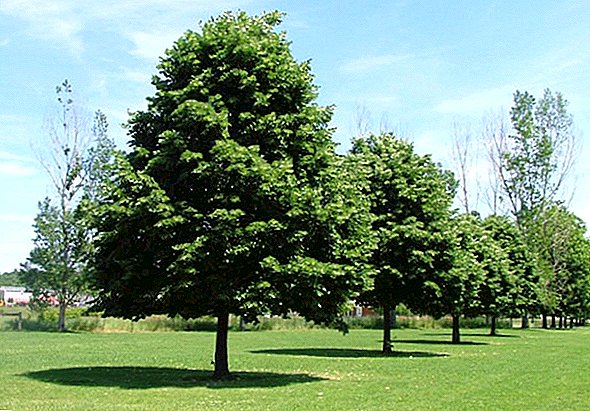
- Small-leaved linden. The height of the trees of this species is 15-18 m, width - 5-10 m. Flowering occurs in July and lasts about 3 weeks. It has small leaves heart-shaped, with small beards of red hairs in the corners. It grows well both in the sun and in partial shade.
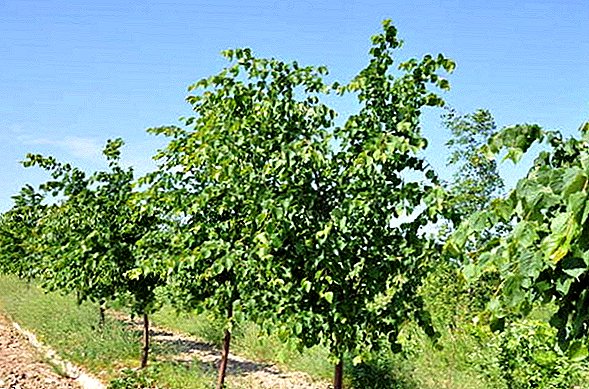
Find out what is useful lime honey.
Alder
It grows in Europe, Western Siberia, the Caucasus and North America. It is a tree whose height is about 20 m. It has a narrow-oval crown and a light gray smooth bark. Often alder is used as a fortification of the river bank.
Among the most common types of emit:
- Alder green. Most often found in the Carpathians and Western Europe. For the cultivation of suitable sandy, clay, gravelly, peat soils. The height of the tree is not more than 20 m. Flowering and fruiting begins at the age of 5 years. It has good winter hardiness.
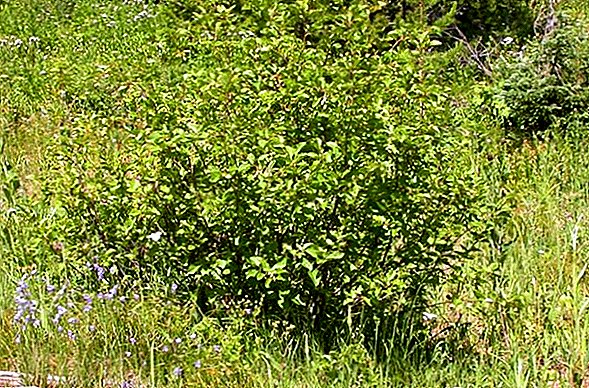
- Golden alder. The height of the tree is approximately 20 m. It has a golden broad rounded or conical crown. Young leaves have a golden-green color, with time they turn yellow. The flowers are represented by male earrings with a red-brown color, female flowers - in the form of cones. It is resistant to frost, but is sensitive to droughts.
- Siberian alder. Чаще всего встречается на Дальнем Востоке. Местами произрастания являются берега рек, подлесок хвойных лесов. Высота составляет 8-10 м. Растение не цветет. Обладает полной зимостойкостью.Often used for landscaping cities - planted in parks and squares, on avenues.
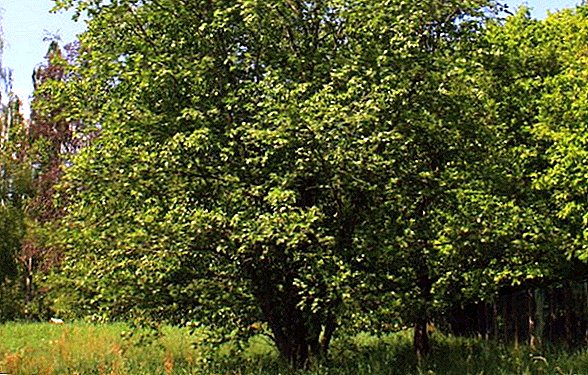
Rowan
Rowan includes about 100 species. The habitat of growth is Europe, Western Asia, North America, the Caucasus. The tree has a height of 5 to 10 meters, a width of 4 to 6 meters. There may be one or several trunks.
Consider the most common types of mountain ash:
- Mountain ash. It has an openwork crown, the height of the shrub is 5-10 m. It can live up to 150 years. Possesses yellow-gray bark and gray-red young shoots. The length of the foliage reaches 20 cm, they also have 7-15 leaves each, having a lanceolate or elongated shape. The diameter of the inflorescence is approximately 10 cm. Flowering occurs in May and June, and an unpleasant aroma emanates from the plant.
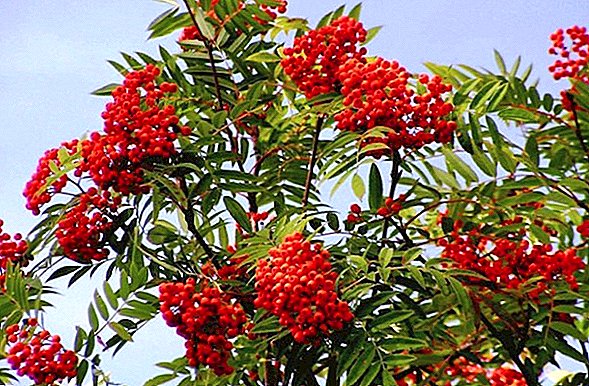
- Round-leaved rowan. Differs in slow growth, has dense conic krone. The height of the tree is 5-10 m, the width of the crown is 4-7 m. It has leathery elliptical leaves, painted in dark green color. Flowering occurs in May and June. At this time, large white fragrant flowers appear on the tree.
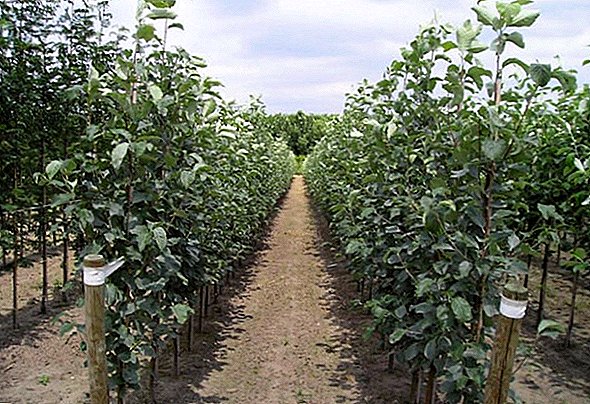
- Rowan intermediate. It grows in Sweden, Denmark, sometimes found in Finland, Estonia, Latvia and the northern regions of Poland. The height of the deciduous tree is 10–20 m. Annually it adds about 40 cm in height. The crown diameter is 5–7 m. The foliage is elliptical or oblong-ovate, the leaf length is from 6 to 12 cm. can grow on any soil.
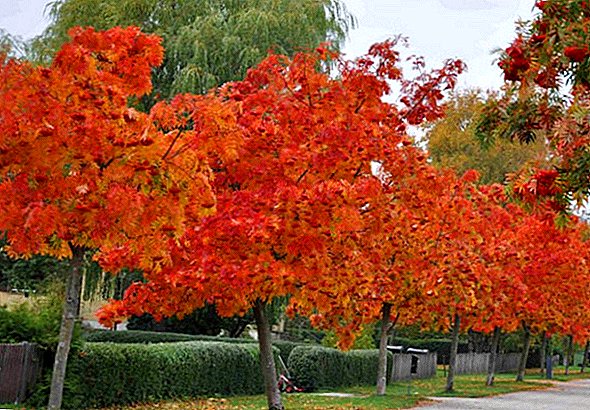
Did you know? The taste of the fresh fruits of mountain ash is bitter, but after the first frosts the bitter glycoside of sorbic acid is destroyed, and the berries lose their bitterness.
Poplar
The height of the trees can reach 40 meters. They have small flowers that are collected in earrings. The fruit is represented by a box with very small seeds, in which there are bunches of hairs, the so-called "poplar fluff". It should be noted that the fluff is present only in female specimens, so they should be avoided when gardening.
The most common types of poplars include:
- White poplar. The tree has a rounded, wide crown, its height is 20-35 m, width - 15-20 m. It has dioecious flowers, yellow-green earrings. Foliage on young specimens is similar to the foliage of maple. The plant has a superficial, very wide root system. It grows well both in the sun and in partial shade. It has good winter hardiness, can be grown in cities. Suitable for planting fresh or wet fertile soil.
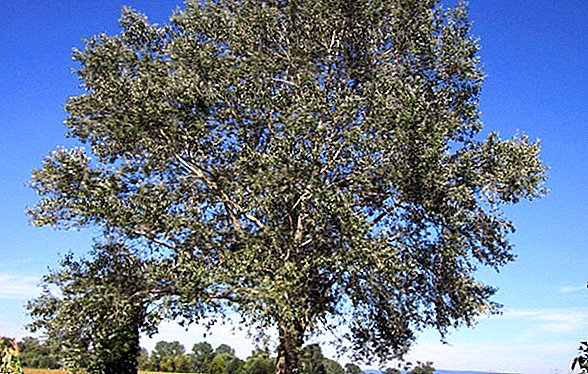
- Poplar fragrant. The height of the tree is about 20 meters. It has a dense ovoid crown. Often found in Eastern Siberia, the northern regions of China and Mongolia. It has an oval-shaped leathery foliage, its length is 10 cm, and its width is 6 cm. It grows rapidly, loves light. It has good winter hardiness, but in urban conditions it quickly perishes.
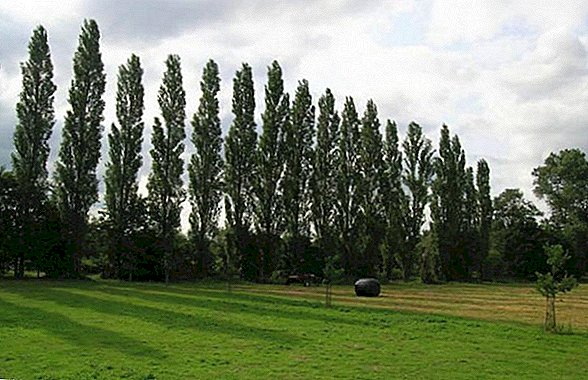
- Poplar large-leaved. The average tree height is up to 9 meters. It is characterized by wide, oval leaves, the length of which is 10-12 cm. Loves sunlight. In winter, young shoots exposed to freezing. It grows well in urban environments.
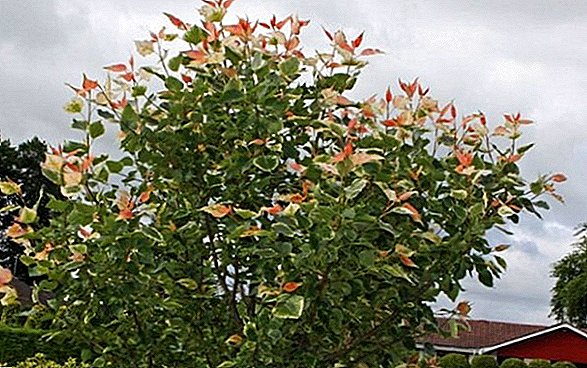
Ash
The height of the ash can be from 25 to 40 meters, width - from 10 to 25 meters. Quite a large plant with a wide oval, openwork crown and lightly branched shoots. Growth occurs quickly - every year the tree adds 60-80 cm each. The flowers have a not very attractive appearance.
The foliage is bright green, blooming occurs late. Do not have time to turn yellow in autumn - they fall off quickly. Possesses deep root system sensitive to increased soil density.
Consider the common types of ash:
- Ash Ash. The height of the tree is 20-40 m, width - up to 25 m. It has few decorative flowers, brown, winged fruits, which often remain on the plant until spring. The shape of the leaves is complex, five-leaf, color green. It grows well in the shade and in the sun, can be used for planting in urban parks. From soil prefers fertile alkaline substrate.
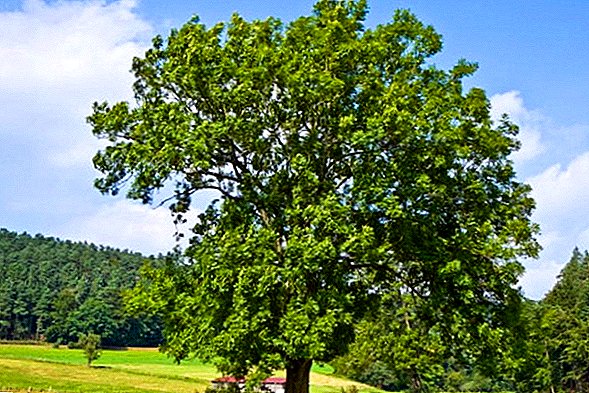
- White ash. It has small dimensions: height - 6-10 m, width - up to 6 meters. It grows slowly, different regular, rounded, dense crown. Characterized by the presence of white, fragrant flowers, which are collected in panicles - their length is about 15 cm. During the flowering period, the tree looks very beautiful. The leaves are oblong ovoid, green in color. When planting in the shade, flowering occurs extremely rarely.
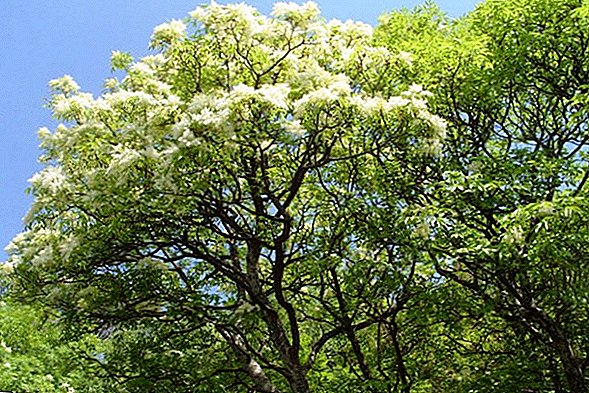
Read also about the beneficial and healing properties of ash.
In nature there are a huge number of deciduous trees, and each and of them has its own characteristics and distinctive features. If you decide to plant a tree, it is very important to study its characteristics and agrotechnical rules.




































